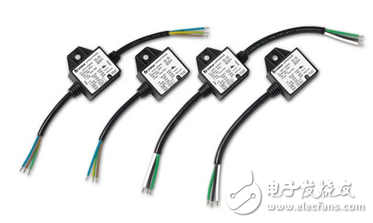October 13, 2016 - Littelfuse, Inc. today announced the launch of a new line of thermal protection surge protection devices that provide powerful transient overvoltage protection for outdoor and commercial LED lighting. The LSP05GI series of LED lighting surge protection modules are capable of providing 10kV/5kA surge protection and are IEC/EN 61643-11 certified. Its surge handling capability enhances the surge immunity of LED lighting fixtures and extends their working life.

Littelfuse thermal protection varistor technology protects fixtures or installations from "end of life" or extreme surge conditions. Parallel and series models are available. The series model protects the luminaire by disconnecting the power supply; the parallel model disconnects at the end of its life and continues to power the luminaire.
Applications include road lighting, parking lot lighting, wall washing, traffic lighting, floodlighting, digital signage, tunnel lighting and street lighting.
"The LSP05GI series of LED lighting surge protection modules can be used worldwide because it helps luminaire manufacturers meet the latest IEC/EN 60598-1 standard," said Todd Phillips, global marketing manager for Littelfuse LED Lighting.
The LSP05GI series of LED lighting surge protection modules have the following key advantages:
• These modules are certified to IEC 61643-11 and EN61643-11 to help luminaire manufacturers meet the international luminaire test standard IEC/EN 60598-1.
• Double insulated wires make it suitable for luminaires designed for Class I and Class II installations
• Built-in LED indicator to notify maintenance personnel when a replacement is required
Availability
The LSP05GI series is available in bulk with a minimum order quantity of 80. Samples are available from authorized Littelfuse distributors around the world. For a list of Littelfuse authorized dealers, visit the official website.
More information
More information can be found in the following ways: LSP05GI Series LED Lighting Surge Protection Module Product Page. For technical questions, please contact: Product Manager Johnny Chang: .
In general, ONU devices can be classified according to multiple application scenarios such as SFU, HGU, SBU, MDU, and MTU.
1. SFU type ONU deployment
The advantage of this deployment method is that the network resources are relatively abundant, and it is suitable for independent households in the FTTH scenario. It can ensure that the user terminal has broadband access functions, but does not involve more complicated home gateway functions. The SFU in this environment has two common forms: it provides both an Ethernet interface and a POTS interface; it only provides an Ethernet interface. It should be noted that SFU can provide coaxial cable functions in both forms to facilitate the realization of CATV services, and it can also be used with home gateways to facilitate the provision of value-added service functions. This scenario is also applicable to enterprises that do not need to exchange TDM data.
2. HGU type ONU deployment
The HGU type ONU terminal deployment strategy is similar to the SFU type, except that the functions of the ONU and RG are integrated in hardware. Compared with SFU, it can realize more complicated control and management functions. The U-shaped interface in this deployment scenario is built into the physical device and does not provide an interface. If you need to provide an xDSLRG device, you can directly connect multiple types of interfaces to the home network, which is equivalent to a home gateway with an EPON upstream interface. Used in FTTH occasions.
3. SBU type ONU deployment
This deployment scheme is more suitable for independent enterprise users to construct the network under the FTTO application mode, and is based on the enterprise change of SFU and HGU deployment scenarios. The network in this deployment environment can support broadband access terminal functions and provide users with multiple data interfaces including El interface, Ethernet interface, and POTS interface, which can meet the needs of enterprises in data communication, voice communication, and TDM dedicated line services. Usage requirements. The u-type interface in the environment can provide enterprises with a frame structure with multiple attributes, which is more powerful.
4. MDU type ONU deployment
This deployment scheme is suitable for multi-user network construction under multi-application modes such as FTTC, FTTN, FTTCab, and FTTZ. If enterprise-level users have no demand for TDM services, this solution can also be used for EPON network deployment. This deployment solution can provide broadband data communication services for multiple users, including Ethernet/IP services, VoIP services, and CATV services and other multi-service modes, with powerful data transmission capabilities. Each of its communication ports can correspond to a network user, so in comparison, its network utilization rate is higher.
5. MTU-type ONU deployment
The deployment plan is based on the commercialization of the MDU deployment plan. It can provide multi-enterprise users with multiple interface services including Ethernet interfaces and POTS interfaces, and can meet enterprise voice, data, TDM private line services and other services demand. If combined with the slot type implementation structure, richer and more powerful business functions can be realized.
Poe Onu,Industrial Grade Onu,Poe Function,Fttx Poe Onu,Optical Network Unit
Shenzhen GL-COM Technology CO.,LTD. , https://www.szglcom.com